-
ICMag with help from Landrace Warden and The Vault is running a NEW contest in November! You can check it here. Prizes are seeds & forum premium access. Come join in!
You are using an out of date browser. It may not display this or other websites correctly.
You should upgrade or use an alternative browser.
You should upgrade or use an alternative browser.
Dud Identification Collective Knowledge.
- Thread starter high life 45
- Start date
- Status
- Not open for further replies.
That is an excellent point!!!! Does anyone have info on scientific testing for viruses and other pathogens? Are there companies that can do testing, in legal states?
Can seeds transmit viruses or other pathogens to the plant they become?
Have some growing from seeds, which seem to be dudding. Wondering if they are just genetically screwed.
Better go back and read the thread. All of your questions have been answered.
Some more DUD pics... This plant is from seed.. I grew it in the same medium that had a DUD in it b4... I wanted to see if the Dead roots from the previous DUD would do anything so a new plant from seed...
Piece of shit infected 2 branches on the entire bush... Just my own personal observations and opinion this is AYP
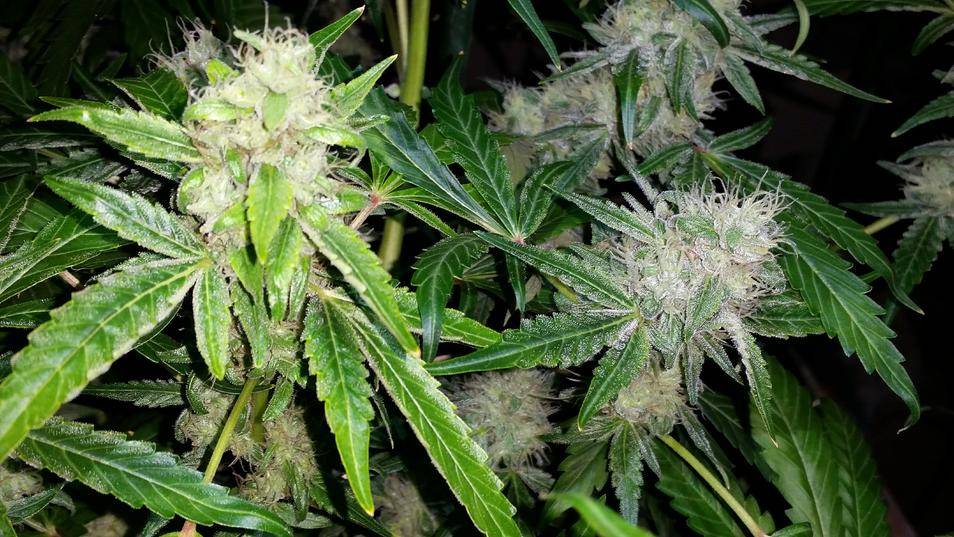
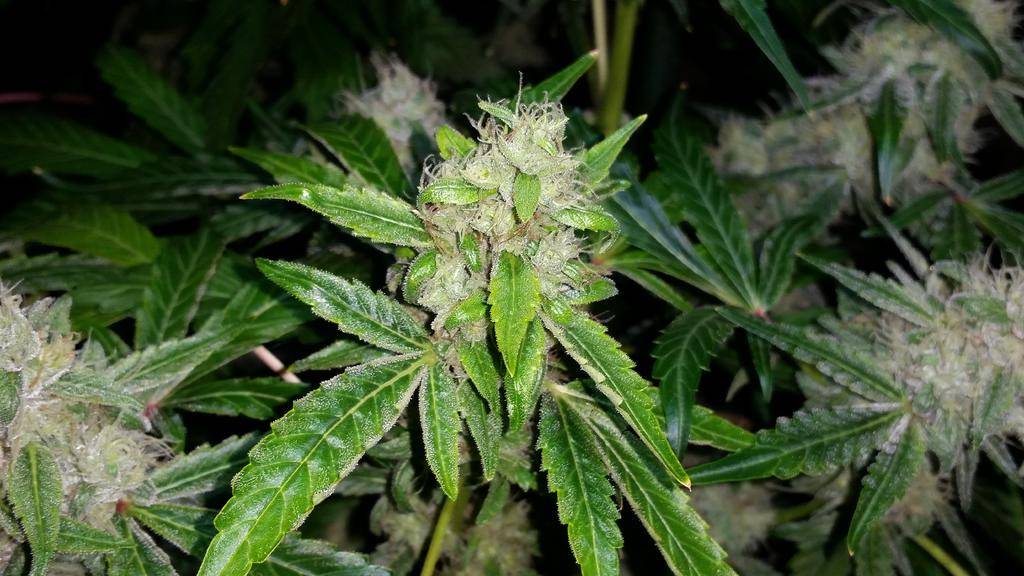
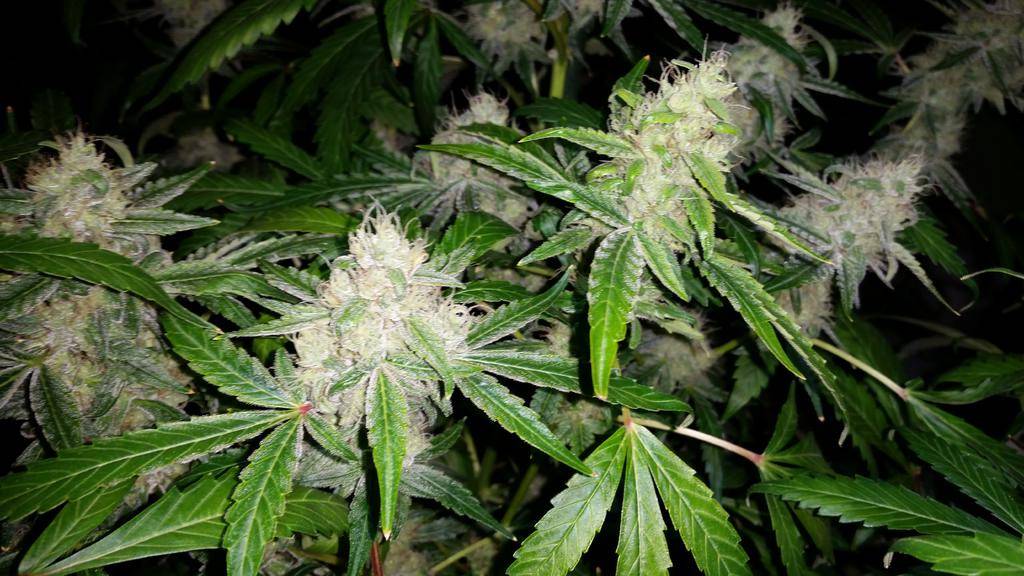
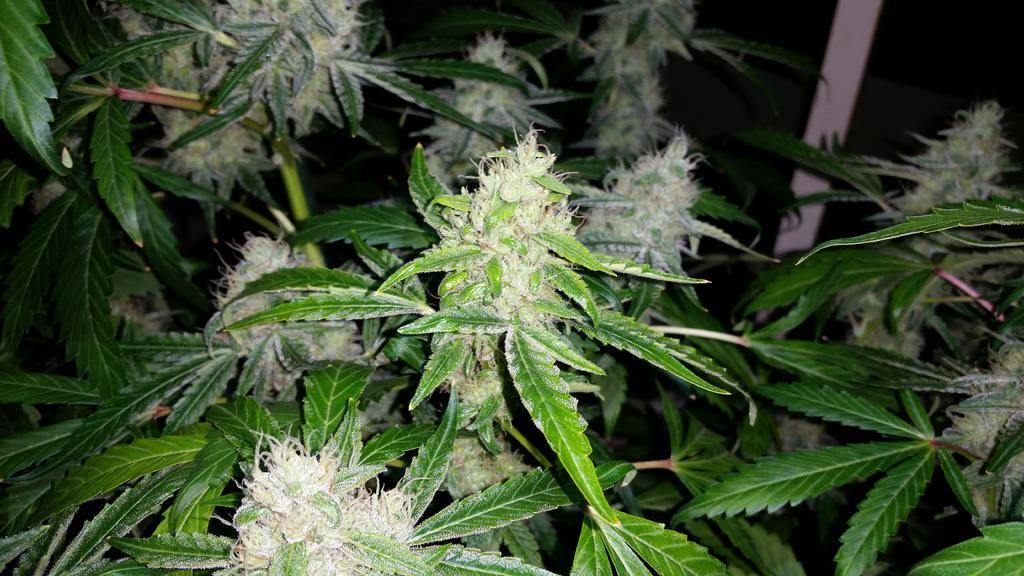
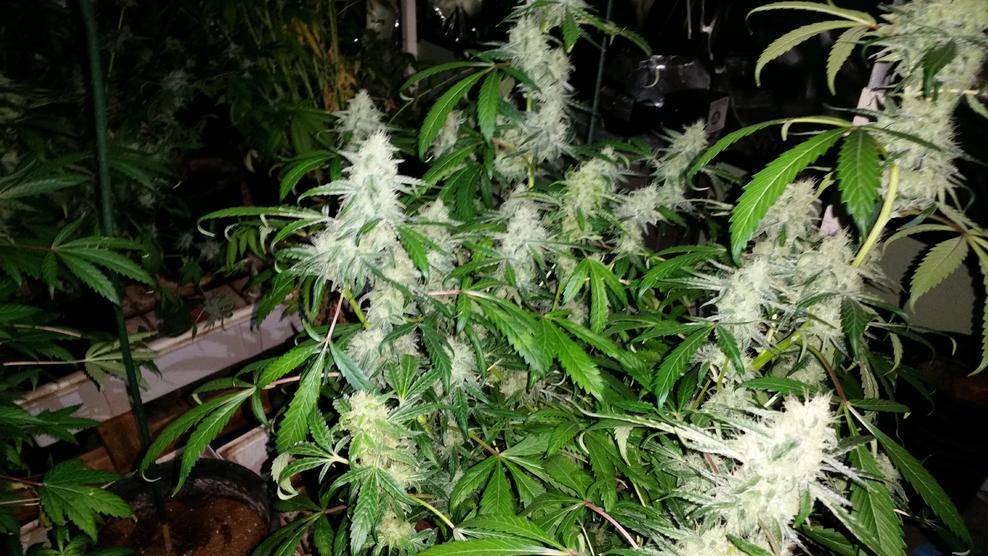
Piece of shit infected 2 branches on the entire bush... Just my own personal observations and opinion this is AYP
Better go back and read the thread. All of your questions have been answered.
Have read a lot of conflicting information. Was told that seeds could not transmit, but I grew seeds from infected breeder, and they sure look like broad mite damage. Buying 200X microscope to confirm.
I just found a wonderful article, all about this, on another site.
It would be great if these posts were compiled into a useful tech, instead of going through 750 posts, with no clear answers.
Was looking for a pathogen, but it seems to just be the mites, unless they are wrong.
Will post whether I find them, or not.
Have read a lot of conflicting information. Was told that seeds could not transmit, but I grew seeds from infected breeder, and they sure look like broad mite damage. Buying 200X microscope to confirm.
I just found a wonderful article, all about this, on another site.
It would be great if these posts were compiled into a useful tech, instead of going through 750 posts, with no clear answers.
Was looking for a pathogen, but it seems to just be the mites, unless they are wrong.
Will post whether I find them, or not.
Seeds can transmit viruses, not BMs. There ARE clear answers. Duds can be caused by broad or cyclamen mites, NOT Russet mites. "Duds" can be caused by TMV, which can be passed on by seeds. If you had read the thread, you would have seen the positive test results, which were posted. "Duds" are also some kind of mutation that is associated with certain strains, namely SourDubb for one, and also crosses that were made from it, including GG4. No one seems to know what this is. It's a mystery. There is a possibility that some other type of "dudding" exists, possibly caused by phytoplasmas, although this is only speculation, and nothing has been confirmed by laboratory testing.
Others think it is cause by fungal infections of the root system, namely fusarium. Some of the pictures posted earlier in the thread were definitely fusarium. It's clear that there are multiple issues going on, and people are lumping them all into one generic term: "dudding".
So there you have it. A summary of what has gone on in this thread.
Until people start sending samples in to be tested, the mystery part will remain a mystery.
If you have broad mites, the eggs are easily seen underneath the leaves with a 100X microscope.
hi all brought this over here thought it was a better fit in this thread.
just got an email that an oddball cut is on the road finally. the only person that can fuck this up is the person that is currently driving here with it, me, and the lab at this point. fingers crossed.
a concerned and knowledgeable member who for various reasons couldnt get the test done but was able to get it to me. handed it off to someone on their way here as we speak. sample in hand by tomorrow and off to the lab in the morning. im going to run the following tests.
tmv
phytoplasma
verticilium
fusarium
and anything else they suggest.
im open to suggestions.
classic dud symptoms as discussed in D.I.C.K. thread.
this is a classic original o.g. cut so it fits the m.o..
50 bucks although i think thats per test.
on a side note im going to go on my assumption that it is likely phytoplasma. (not claiming to know that its just my best guess. who the fuck knows. honestly i hope im wrong in favor of a much more manageable pathology.)
if i can get a cutting going from the sample i am going to try the protocol in this paper.
http://www.bulletinofinsectology.org/pdfarticles/vol60-2007-315-316gribaudo.pdf
if this proves effective by proof of a follow up assay and test grow ill be very pleased to announce my new cutting. if not ill be at least past this hypothesis and can move on from having a wrong theory going so as to move onto the next one.
the beauty of this protocol is that its likey to get rid of most pathogens and viruses as this is a fairly rigorous method.tissue culture alone can rid alot of stuff. microtip culture can get rid of most viruses and then this is just a little more intense.
there are countless "ifs" in my plan. im more likely to fail in all accounts than succeed. so haters and dud naysayers prepare you "i told you so speaches".
everyone else, wish me luck its going to take more effort than i have to spare at the moment. im learning as i go. im not anything close to a real scientist i just play one on the forums. all of my knowledge and experience in biotech magic has been acquired fairly recently.but i just found out my latest attempt at tissue culturing was a success.
That's good. The only thing is, that cut is not from SourDubb line, so we will still not know what is causing that particular problem.
I'm guessing it is TMV or another virus, as some samples have already tested positive for TMV, including OGs.
View Image
View Image
Note the symptoms of plants that say "not detected".
I'm guessing they only tested for TMV, and not any of the other stuff.
Just because something dudding has tmv doesn't confirm it is the cause unless we never find this condition in the absence of tmv. Tmv was on those cuts maybe it was that which caused it. Maybe not. Just like if there is phytoplAsma it will only tell us that in this case of dudding this and that were and weren't present. We need more tests but with growing tolerance and labs participation being accessible to more and more people, coupled
with an apparent trend of this phenomena being on the increase. I think we will start being able to make some conclusions. Soon probably. about which pathogens are always present and which ones are not. Also if we find a pathogen in a dud and are able to clear it and the dud responds that will be another clue. Maybe we advance to a theory worth testing from these hypothetical causes.
As for whether or not it's the same type of dud. I'm personally of the opinion it's the same. I won't bother arguing about why until I have them both in hand but I will say this dud I'm testing matches the dud symptoms from la cuts of gg. We know with both the sour dub and the gg dudding, the tendency passed to other cuts. it stands to reason other strains out there may have the same exact problem.....maybe. Maybe it has nothing to do with the coincidental lineage. Maybe it just shows better in certain seedlines families.
im going to copy and paste this to the dud thread. lets not litter this page with anymore dud topcs. sorry for hijacking the thread again with this topic which really only happens to relate to it by it having been one of the most famous cases so far. i dont personally think its a gg issue. i posted it here because there is a lot of crossover of interest and discussion see you to forums down the street. on the left downstairs in the infirmary. ill be there all week hashing out a plan of action if anyone wants to discuss. nite nite gluesters.

im not sure you can say that there are different causes based soley on finding these different pests and pathogens present in different cases of duds without looking for all of them at the same time in the same samples. in theory the cause could be the same for the duds in all of those cases you just mentioned but we happened to find these other problems and not the cause. or it was one of them and it was present in all but not discovered but we just happened to find these other problems. so to then proclaim "a ha!" i think would be premature.Seeds can transmit viruses, not BMs. There ARE clear answers. Duds can be caused by broad or cyclamen mites, NOT Russet mites. "Duds" can be caused by TMV, which can be passed on by seeds. If you had read the thread, you would have seen the positive test results, which were posted. "Duds" are also some kind of mutation that is associated with certain strains, namely SourDubb for one, and also crosses that were made from it, including GG4. No one seems to know what this is. It's a mystery. There is a possibility that some other type of "dudding" exists, possibly caused by phytoplasmas, although this is only speculation, and nothing has been confirmed by laboratory testing.
Others think it is cause by fungal infections of the root system, namely fusarium. Some of the pictures posted earlier in the thread were definitely fusarium. It's clear that there are multiple issues going on, and people are lumping them all into one generic term: "dudding".
So there you have it. A summary of what has gone on in this thread.
Until people start sending samples in to be tested, the mystery part will remain a mystery.
If you have broad mites, the eggs are easily seen underneath the leaves with a 100X microscope.
Last edited:
the duds could be vectored by mites in addition to other problems like tmv and phytoplasmas while none of the above are the reason but are just merely neighbors in the disease fest. like for instance people with genital herpes are more likely than people without to have genital warts hiv and or chlamydia. people with most of these have had sex. but we cannot say that herpes is a result of warts or vice versa but they can often be mututally present in people who have sex and even more so in people who have a higher frequency of sex and partners. having chlamidia increases likely hood of hiv infection due to ease of transmission made possible by open inflamed tissue. yadda yadda yadda.
in short.Correlation does not imply causation
in short.Correlation does not imply causation
so i beg to differ on the idea that there are clear answers. maybe youre right but i dont think its correct to say it is clear yet.
so i beg to differ on the idea that there are clear answers. maybe youre right but i dont think its correct to say it is clear yet.
I'm no expert, and only briefly experienced, the dudd growth I saw was only on the gg4 I got from the cup. Plants right next to the dudds still grew normally and I am growing heavy healthy plants in the room next door with shared air, same nutes and environment...for this reason im going to rule out "growers error" Imo, I am gonna rule out bms for the cause of the witches broom that I "grew", I don't think this is a strain specific phenomenon. Will try to get some pics up of the big healthy plant that didn't catch herps.
More Pics
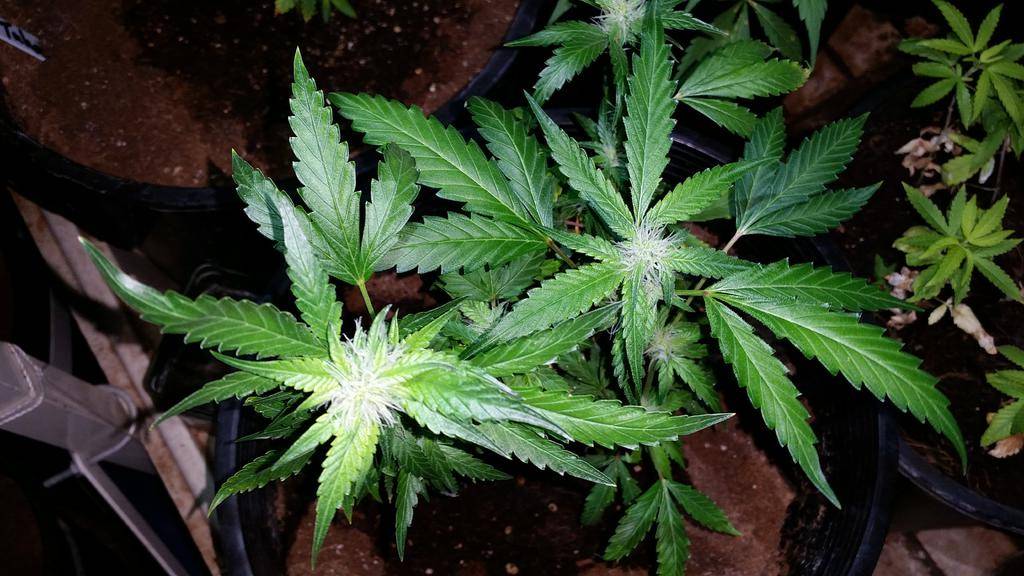
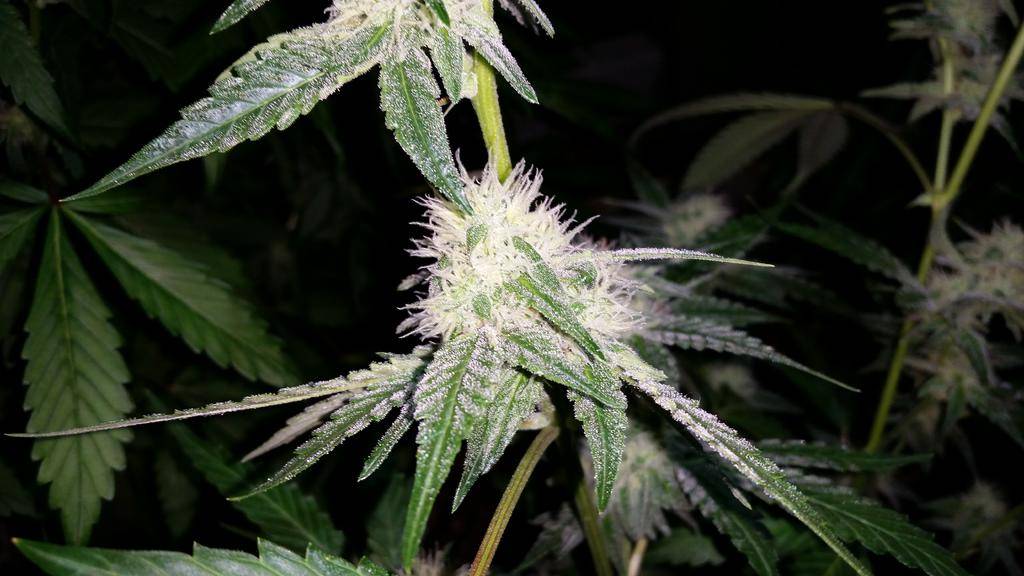
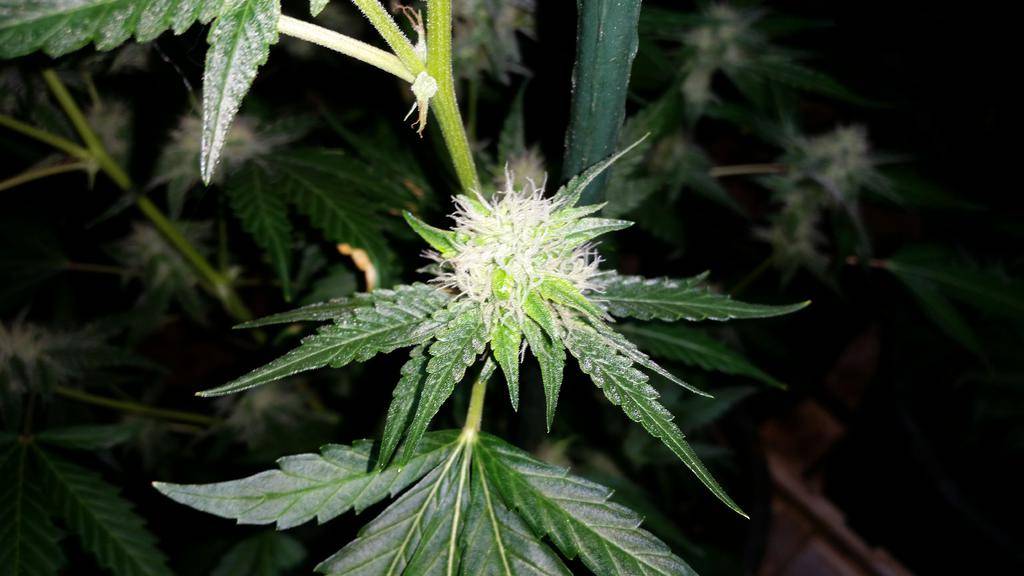
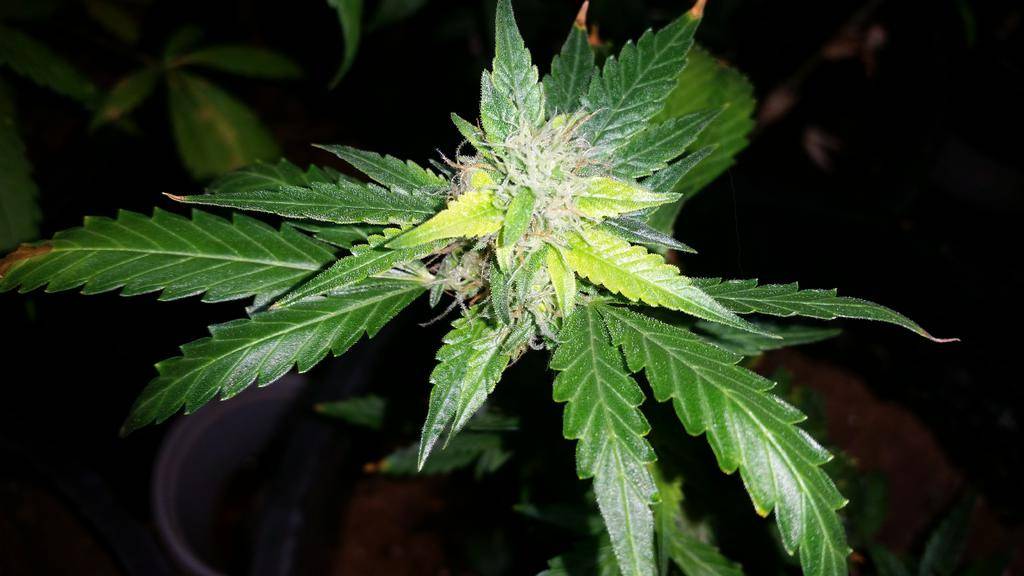
Ima go out and say that these are cases of phytoplasma, theres not much doubt in my mind anymore. Candidatus Phytoplasma from the 16s group to be exact, theres a huge list of afflicted plants, and cannabis is surely not resistant, and I believe its acquired its own infectious strain.
I'm an organic grower, and I've been dealing with this for a couple years. A friend and fellow grower was afflicted with gnats and had these symptoms, it befuddled him. He did everything in terms of cleaning, aside from killing his 50+ moms. I evidently recieved the pathogen from him and was always thinking I was just doing a terrible job growing and feeding my plants correctly, it resembles a pH imbalance, for sure...but the gnats were the vector for a disease...Its hard to ID as opening up the plant doesnt really show any signs of bacterial infection.
Its primary vector are pests, including root aphids, fungus gnats, and possibly broad mites...along with the grower, ie unsanitary pots and stakes, cloning and pruning tools, and hand pruning from plant to plant without sanitizing (cut yr nails)...
IME, plants with no fungus gnat infestation were healthy, or stayed healthy longer. I've even planted some plants into reused soil as to see if this is passed in part through culture.
I will be watering in some neematodes tonight to completely eliminate the possibility of a fungus gnat infestation and will not be using stakes in an attempt to eliminate root damage...
All the info I read is that it is a disease passed through phloem, so being super sanitary with the pruning and eliminating root damage may be able to mitigate the situation...
I am also going to be breaking all organic to use some GH Rapid start in order to maintain a super healthy root zone and get some salicylic acid to the plants in an attempt to superboost the immune system.
I've already culled all of my mother plants, have a few gallons of OxiDate on the way, and am overhauling and redesigning my sanitation procedures to be much more stringent. The last thing I can do is scorched earth, kill everything, scrub the show up and down, throw away all my soil, and start from scratch, from seeds to soil.
Overall, I think that this should be a huge wake up call for the community to be much more aware of diseases, and to be much more on point in standard sanitation procedure.
Perhaps there is also a resistant breeding effort to be undertaken here.
Some links
http://en.wikipedia.org/wiki/Phytoplasma
Candidatus
Phytoplasma asteris’, a novel
phytoplasma taxon associated with aster yellows
and related diseases
http://ijs.sgmjournals.org/content/54/4/1037.full.pdf
Phytoplasma Classification System II
http://plantpathology.ba.ars.usda.gov/pclass/pclass_phytoplasmaclassification_system2.html
I'm an organic grower, and I've been dealing with this for a couple years. A friend and fellow grower was afflicted with gnats and had these symptoms, it befuddled him. He did everything in terms of cleaning, aside from killing his 50+ moms. I evidently recieved the pathogen from him and was always thinking I was just doing a terrible job growing and feeding my plants correctly, it resembles a pH imbalance, for sure...but the gnats were the vector for a disease...Its hard to ID as opening up the plant doesnt really show any signs of bacterial infection.
Its primary vector are pests, including root aphids, fungus gnats, and possibly broad mites...along with the grower, ie unsanitary pots and stakes, cloning and pruning tools, and hand pruning from plant to plant without sanitizing (cut yr nails)...
IME, plants with no fungus gnat infestation were healthy, or stayed healthy longer. I've even planted some plants into reused soil as to see if this is passed in part through culture.
I will be watering in some neematodes tonight to completely eliminate the possibility of a fungus gnat infestation and will not be using stakes in an attempt to eliminate root damage...
All the info I read is that it is a disease passed through phloem, so being super sanitary with the pruning and eliminating root damage may be able to mitigate the situation...
I am also going to be breaking all organic to use some GH Rapid start in order to maintain a super healthy root zone and get some salicylic acid to the plants in an attempt to superboost the immune system.
I've already culled all of my mother plants, have a few gallons of OxiDate on the way, and am overhauling and redesigning my sanitation procedures to be much more stringent. The last thing I can do is scorched earth, kill everything, scrub the show up and down, throw away all my soil, and start from scratch, from seeds to soil.
Overall, I think that this should be a huge wake up call for the community to be much more aware of diseases, and to be much more on point in standard sanitation procedure.
Perhaps there is also a resistant breeding effort to be undertaken here.
Some links
http://en.wikipedia.org/wiki/Phytoplasma
Candidatus
Phytoplasma asteris’, a novel
phytoplasma taxon associated with aster yellows
and related diseases
http://ijs.sgmjournals.org/content/54/4/1037.full.pdf
Phytoplasma Classification System II
http://plantpathology.ba.ars.usda.gov/pclass/pclass_phytoplasmaclassification_system2.html
Ima go out and say that these are cases of phytoplasma, theres not much doubt in my mind anymore. Candidatus Phytoplasma from the 16s group to be exact, theres a huge list of afflicted plants, and cannabis is surely not resistant, and I believe its acquired its own infectious strain.
I'm an organic grower, and I've been dealing with this for a couple years. A friend and fellow grower was afflicted with gnats and had these symptoms, it befuddled him. He did everything in terms of cleaning, aside from killing his 50+ moms. I evidently recieved the pathogen from him and was always thinking I was just doing a terrible job growing and feeding my plants correctly, it resembles a pH imbalance, for sure...but the gnats were the vector for a disease...Its hard to ID as opening up the plant doesnt really show any signs of bacterial infection.
Its primary vector are pests, including root aphids, fungus gnats, and possibly broad mites...along with the grower, ie unsanitary pots and stakes, cloning and pruning tools, and hand pruning from plant to plant without sanitizing (cut yr nails)...
IME, plants with no fungus gnat infestation were healthy, or stayed healthy longer. I've even planted some plants into reused soil as to see if this is passed in part through culture.
I will be watering in some neematodes tonight to completely eliminate the possibility of a fungus gnat infestation and will not be using stakes in an attempt to eliminate root damage...
All the info I read is that it is a disease passed through phloem, so being super sanitary with the pruning and eliminating root damage may be able to mitigate the situation...
I am also going to be breaking all organic to use some GH Rapid start in order to maintain a super healthy root zone and get some salicylic acid to the plants in an attempt to superboost the immune system.
I've already culled all of my mother plants, have a few gallons of OxiDate on the way, and am overhauling and redesigning my sanitation procedures to be much more stringent. The last thing I can do is scorched earth, kill everything, scrub the show up and down, throw away all my soil, and start from scratch, from seeds to soil.
Overall, I think that this should be a huge wake up call for the community to be much more aware of diseases, and to be much more on point in standard sanitation procedure.
Perhaps there is also a resistant breeding effort to be undertaken here.
Some links
http://en.wikipedia.org/wiki/Phytoplasma
Candidatus
Phytoplasma asteris’, a novel
phytoplasma taxon associated with aster yellows
and related diseases
http://ijs.sgmjournals.org/content/54/4/1037.full.pdf
Phytoplasma Classification System II
http://plantpathology.ba.ars.usda.gov/pclass/pclass_phytoplasmaclassification_system2.html
The only problem I have with that is: fungus gnats are not known carriers of phytoplasmas. Not saying it's impossible, but it has not been demonstrated. Same goes for Broad mites. Every bit of reading I've done on BMs says they inject a "toxin", however this "toxin" is not named. Nature is ever changing, and no doubt species can adapt and jump to other food sources. That could be the case here, but it's still guesswork until testing confirms. Have you sent any "dudded" material in for testing?
I do not spend one minute worried about duds with a single plant I run. If it goes to shit I fucked up...that is more than enough to worry about by itself.
Yup..

I have a gg4 outside in a 65,
I could post a pic but I don't want to crush the dud theory..
A biological advantage ...is key
I do not spend one minute worried about duds with a single plant I run. If it goes to shit I fucked up...that is more than enough to worry about by itself.
Edit...noquestion I will try it. But commit 20 lights to it...not after hearing this
Im not sure i can test for stuff in a non-med state.
morningdewd
Member
only time I had "duds" was after I got some elite clones back after I gave him them to a friend to care for until my divorce was final.i found out later that he smoked cigarettes in close proximity on a regular basis .they never recovered.also I have heard and tried this ,putting clones in the sun to rejuve and gradually increasing the time aka hardening off,.think Shanti may have come up w that one
Some TMV links -
Companies That Manufacture Test Kits
There are currently two companies that manufacture test kits available for on-site testing. Not every company carries kits for all diseases. Note: Kits need to be refrigerated and expiration dates observed.
ImmunoStrips from AgDia Inc 30380 County Rd. 6 Elkhart, Indiana 46514 1-800-622-4342, http://www.agdia.com
Alert Kits from Neogen Company Phone: 800/477-8201
http://plant.neogeneurope.com/ (Information about the test kits are on Neogen Europe website)
Info -
https://www.icmag.com/ic/showthread.php?t=177527
Also saw someone suggest intentionally trying to infect a cucumber plant, since signs will appear quickly.
I just ordered 5 test strips from agdia, and will test next week.
Here is how they are used-
https://www.youtube.com/watch?v=zD4z3PHCqIc
More TMV info
http://www.ctvalleytobacco.org/TMV.htm
Companies That Manufacture Test Kits
There are currently two companies that manufacture test kits available for on-site testing. Not every company carries kits for all diseases. Note: Kits need to be refrigerated and expiration dates observed.
ImmunoStrips from AgDia Inc 30380 County Rd. 6 Elkhart, Indiana 46514 1-800-622-4342, http://www.agdia.com
Alert Kits from Neogen Company Phone: 800/477-8201
http://plant.neogeneurope.com/ (Information about the test kits are on Neogen Europe website)
Info -
https://www.icmag.com/ic/showthread.php?t=177527
Also saw someone suggest intentionally trying to infect a cucumber plant, since signs will appear quickly.
I just ordered 5 test strips from agdia, and will test next week.
Here is how they are used-
https://www.youtube.com/watch?v=zD4z3PHCqIc
More TMV info
http://www.ctvalleytobacco.org/TMV.htm
Last edited:
- Status
- Not open for further replies.
Latest posts
-
-
-
-
Highliger Birmaan Grow - Living soil, No Till - Selektionsrun | BW4 - endless -
- Latest: El Pollo Diablo
Latest posts
-
-
-
-
Highliger Birmaan Grow - Living soil, No Till - Selektionsrun | BW4 - endless -
- Latest: El Pollo Diablo


